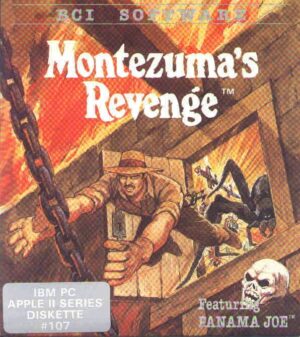Retro Replay Review
Gameplay
Cytron Masters lays the groundwork for what would become the real-time strategy genre, introducing multi-threaded routines that allow every unit on the battlefield to move and act simultaneously. From the moment you load into the interactive tutorial, you’re thrust into a living, breathing warzone where split-second decisions can mean the difference between victory and defeat. The control scheme is deceptively simple: you direct your Commander, place and relay orders to nearby Cytrons, and watch as your forces execute your plans in real time.
The game’s strategic depth emerges from its five distinct unit types: Mines, Shooters, Bunkers, Commanders, and Missiles. Mines are perfect for area denial or setting traps near Power Centers. Shooters automatically scan a three-space radius for enemies and fire at the closest target, making them the backbone of any defensive line. Bunkers provide a static bulwark against frontal assaults, while Missiles offer devastating, long-range strikes that can wipe out clusters of Cytrons in a single explosion. The star of the show is the Commander unit, which serves as a mobile HQ, relaying your commands to any friendly Cytron within its three-space operational radius.
Energy management and map control are equally vital. Eight Power Centers dot the 2-D grid, and capturing them feeds more energy into your reserves, allowing you to produce additional units. Balancing offensive pushes against the opponent’s Command Center with defensive assignments around your own creates a dynamic tug-of-war. Whether you’re dueling a friend in hotseat mode or taking on the computer’s AI, every match feels fresh thanks to the interplay between resource grabs, unit placement, and tactical timing.
Graphics
Though primitive by modern standards, Cytron Masters’ visuals remain highly functional and clear. The entire conflict plays out on a clean, top-down grid where each Cytron type is represented by a distinct, color-coded icon. This straightforward presentation keeps the focus squarely on strategy rather than flashy effects, ensuring you always know exactly what’s happening and where your forces stand.
Unit animations are minimal but effective: Shooters swivel into position before firing, Missiles launch and arc overhead before detonating, and Mines blink to signal armed readiness. Explosions are denoted by simple flashes that, while modest, convey the urgency of combat. The static backdrop and grid lines never distract, reinforcing the game’s big idea—pure, unadulterated tactical competition.
User interface elements are similarly utilitarian. A sidebar displays your current energy reserves and the list of Cytrons you’ve built or can build. Command inputs are as basic as clicking on a unit and assigning it a destination or target. In an era before tooltips and tutorial pop-ups were commonplace, Cytron Masters’ clean design and interactive lesson system offered an impressively accessible visual experience for newcomers to computerized strategy games.
Story
Cytron Masters doesn’t weave an epic narrative; its “story” is distilled to its essence: two commanders, each vying to obliterate the other’s Command Center on a futuristic landscape. This minimal setup provides just enough context to frame the action without bogging players down in lore. You understand your goal immediately, and the game wastes no time getting you into the fray.
The interactive tutorial serves as the closest thing to a narrative prologue, guiding you step by step through unit creation, movement, and engagement. As you learn the ropes, you inhabit the role of a strategic manager commanding a cybernetic army. The focus remains laser-sharp on mastering the mechanics, but you still walk away with a sense of piloting an actual futuristic conflict.
While later titles like Modem Wars would expand on these ideas, Cytron Masters’ stripped-down scenario remains charming. Its sparse backstory allows the gameplay to shine, and the lack of an overwrought plot emphasizes the designer’s intent: to pioneer real-time tactics. For history buffs and veterans of the genre, the game’s simplicity is part of its enduring appeal.
Overall Experience
Playing Cytron Masters today is like peering into a strategic time capsule. Its core mechanics—unit variety, resource control, and real-time decision-making—are the same pillars that would support decades of RTS classics to come. While modern gamers might bemoan the lack of high-def graphics or online matchmaking, the game’s pure design still holds up as a challenging, thoughtful contest of wits.
Replay value is high for anyone who enjoys head-to-head duels or wants to test themselves against the CPU’s AI routines. The interactive tutorial eases new players into the real-time mindset, while seasoned strategists will appreciate the razor’s-edge tension of a well-timed missile strike or a clutch Power Center capture. Whether you’re experimenting with minefields or coordinating a multi-pronged assault, Cytron Masters rewards creativity and planning.
In sum, Cytron Masters is more than a historical curiosity—it’s a foundational experience that still offers meaningful challenges. For retro enthusiasts, strategy purists, or anyone curious about the genre’s origins, this early RTS milestone is well worth exploring. Its straightforward presentation and deep mechanics combine into a deceptively simple package that continues to inspire even decades after its release.
 Retro Replay Retro Replay gaming reviews, news, emulation, geek stuff and more!
Retro Replay Retro Replay gaming reviews, news, emulation, geek stuff and more!









Reviews
There are no reviews yet.